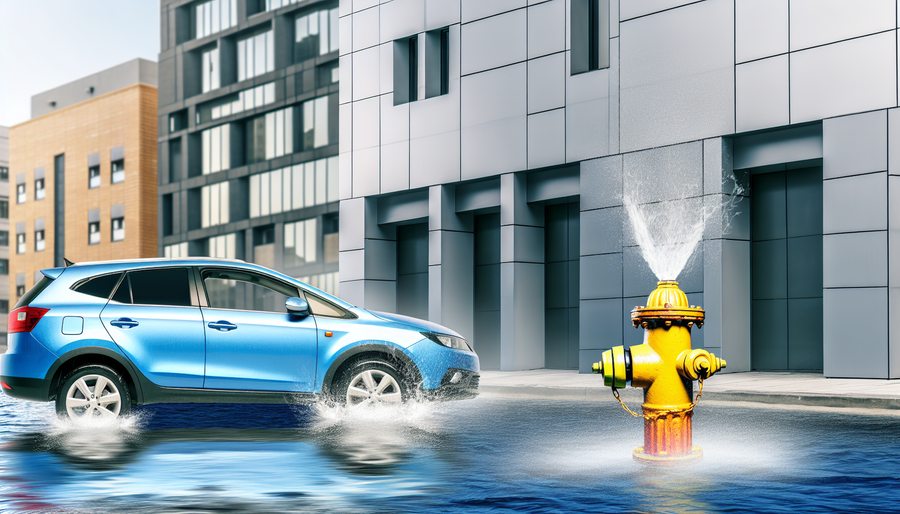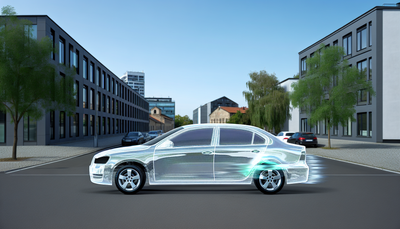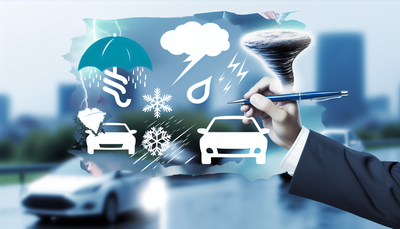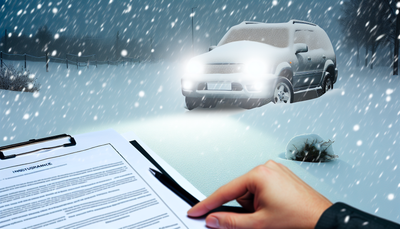Car Flooded by a Fire Hydrant? How Weird Water Damage Is Covered

Car Flooded by a Fire Hydrant? How Weird Water Damage Is Covered
Imagine this: You're grabbing a coffee when you get a call from a neighbor—your car is swimming in water thanks to a burst fire hydrant. As strange as it sounds, these unusual property incidents happen more often than you'd think. But here's the pressing question: does car insurance cover water damage from such uncommon scenarios? Let’s dive into the world of quirky claims and discover how your auto policy might protect you.
When Water Attacks: The Rise of Oddball Car Damage
Most people expect car insurance to kick in for fender benders or theft. But what happens when a misdirected city utility or a massive gush from a fire hydrant floods your vehicle? These aren’t everyday situations, but they fall under a class of incidents insurers deal with more often than we assume.
Unusual water-related damages can occur from:
- A malfunctioning fire hydrant blasting water into the street
- Municipal water main breaks
- Broken sprinklers gone rogue in parking structures
- Flash floods in isolated urban areas
Such situations leave car owners scratching their heads—not just about repairs, but also about who’s footing the bill.
What Type of Insurance Covers This?
When it comes to water damage, not all policies are created equal. Here's a breakdown:
Comprehensive Coverage
This is your best friend in weird water damage situations. Comprehensive auto insurance typically covers non-collision incidents, including:
- Natural disasters (like floods)
- Vandalism
- Falling tree limbs
- Yes—even surprise hydrant geysers
If your car was damaged due to water from a fire hydrant, a comprehensive policy would likely cover the costs, minus your deductible.
Liability-Only Policies
If you carry only the state minimum or liability-only coverage, you're probably out of luck. These policies cover damages you cause to others—not what happens to your own vehicle from rogue water.
Who Pays When It’s Not Your Fault?
In rare cases, the city or property owner may be held liable if proven negligent (e.g., failing to maintain infrastructure). That means your insurer could pursue a claim against them after paying out your damages—a process called subrogation.
Navigating the Claim Process in Uncommon Scenarios
Filing an insurance claim for bizarre incidents can feel daunting. Here’s how to make it smoother:
- Document Everything – Take photos of the damage and scene. Video is even better.
- File a Police or Incident Report – Especially important for municipal claims.
- Contact Your Insurer ASAP – The sooner you call, the sooner you’ll know what’s covered.
- Ask About Deductible Options – With comprehensive claims, you’ll cover your deductible, but repairs beyond that should be covered.
- Track Down Witnesses – Neighbors or business owners nearby may have seen the incident unfold.
Prevention Tips (Yes, Even for Weird Stuff!)
While you can’t control when a fire hydrant explodes, there are ways to lower your risk:
- Avoid parking near hydrants or drainways
- Check weather alerts for flash floods if parked outdoors
- Invest in comprehensive coverage, especially in older cities with aging infrastructure
Conclusion: Expect the Unexpected With the Right Coverage
Uncommon water damage might sound like something out of a sitcom, but it can—and does—happen. Whether it's a fire hydrant turned geyser or a rogue sprinkler system, the right auto insurance makes all the difference.
So next time you’re reviewing your policy, don’t just think about collisions. Think about the weird, wild world of water damage. Because when life gets strange, it pays to be covered.
Have a bizarre insurance story or question? Drop it in the comments—we’d love to hear from you!







